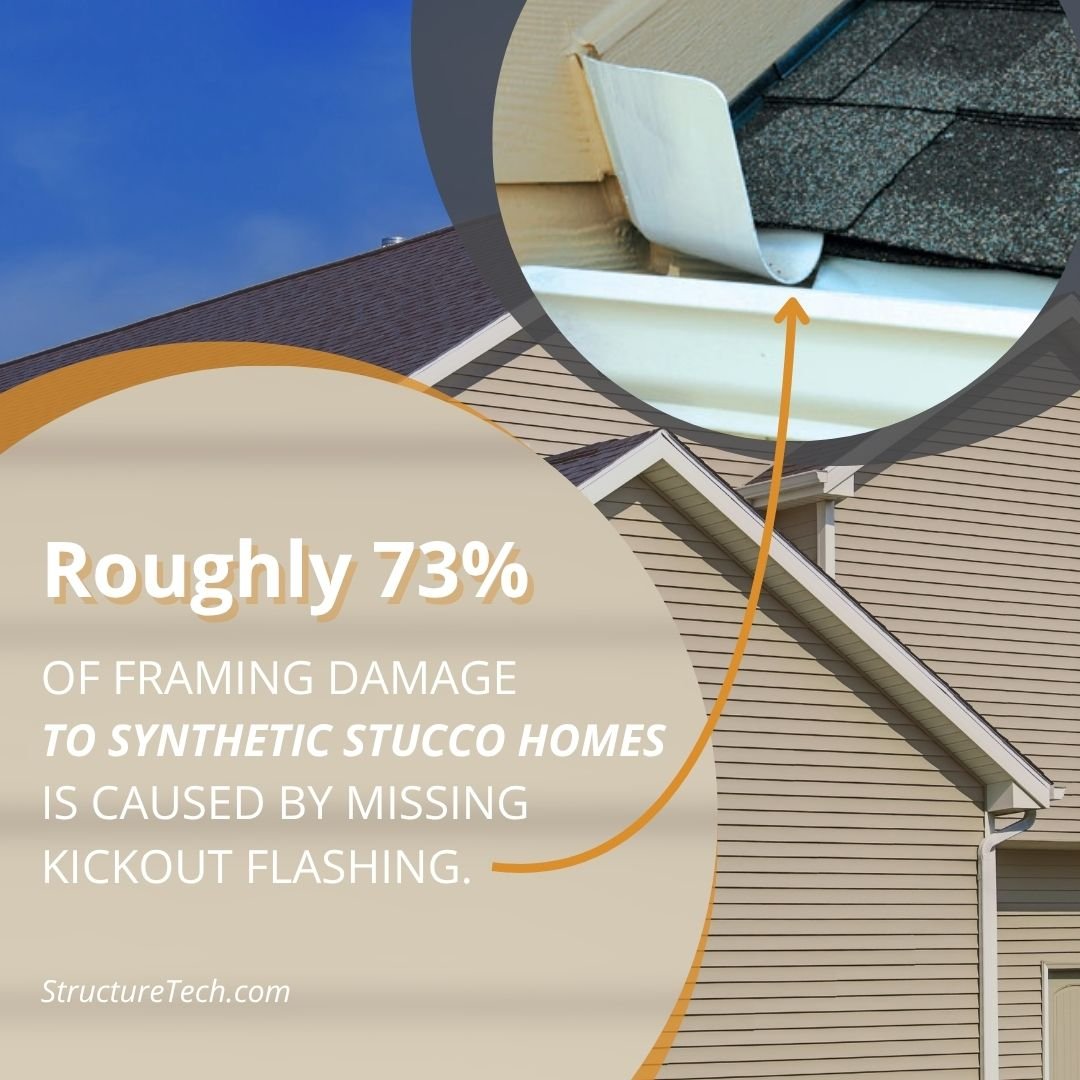Is Kickout Flashing Important for Your Roof?
When most people think about roof problems, they picture missing shingles or visible leaks. But one of the most common causes of hidden water damage is actually a small piece of metal tucked into a corner where the roof meets a wall. It's called kickout flashing.
Kickout flashing might not be something you’ve heard of, but it plays a critical role in keeping water away from your siding and foundation. If it’s missing or poorly installed, it can cause thousands of dollars in damage over time. Let’s take a closer look at what kickout flashing does, why it matters, and how to spot potential issues before they lead to bigger problems.
What Is Kickout Flashing?
Kickout flashing, also called diverter flashing, is a small angled piece of metal installed at the bottom edge of a roof where the roofline meets a vertical wall. Its job is to redirect rainwater away from the wall and into the gutter.
Without it, water running down the roof can slip behind the siding, seep into walls, and cause hidden rot, mold, or foundation damage.
It’s typically found in areas like:
Roof-to-wall transitions
Where gutters start near sidewalls
Above windows or exterior doors beneath roof runoff
This flashing is especially important in areas with heavy rain or wind-driven storms, which makes it a key detail in Florida homes.
Why Kickout Flashing Is Often Missing
Despite its importance, kickout flashing is often left out during construction or roof replacement. Sometimes it’s installed incorrectly, or it gets damaged and is never replaced.
In many cases, it’s simply overlooked because it’s a small, low-cost component that doesn’t grab attention until water damage appears. Over time, water can run behind stucco, vinyl siding, or wood trim without being noticed until paint bubbles, wood softens, or moisture reaches the interior walls.
How Missing Kickout Flashing Affects Your Home
When kickout flashing is missing or defective, water runs directly into the wall system instead of being diverted into the gutter. This can create long-term issues like:
Rotting wood behind siding or soffits
Mold or mildew growth inside wall cavities
Deterioration of stucco or exterior finishes
Damage to sheathing, framing, or insulation
Interior leaks that are hard to trace
Many of these issues stay hidden for months or even years. By the time signs are visible, repairs can be expensive and involve multiple trades; roofing, siding, framing, and drywall.
Signs Your Roof Might Be Missing Kickout Flashing
You don’t need to climb onto your roof to spot potential kickout flashing problems. Here are a few warning signs to look for:
Water stains on siding below roof-to-wall transitions
Warping, bubbling, or discoloration of exterior finishes
Persistent moisture or mold near the ceiling or upper corners of interior walls
Gutters that begin near a sidewall with no visible flashing diverter
A roof slope that runs directly into a vertical wall without a clear water deflection path
If you're unsure, a professional home inspection can confirm whether the flashing is installed properly or if repairs are needed.
Kickout Flashing and Florida Homes
In Florida, homes are exposed to frequent rain, wind-driven storms, and high humidity…all of which increase the risk of water intrusion.
Kickout flashing plays an even more critical role in this environment. Because stucco and wood siding are common in Florida homes, missing flashing can cause moisture to get trapped behind the finish. This can lead to rot behind the walls, even if the exterior still looks fine.
During a home inspection, inspectors often check roof-to-wall transitions, especially above entryways and garage walls, to verify that kickout flashing is in place and doing its job.
Why It Matters During a Home Inspection
If you’re buying or selling a home, kickout flashing may seem like a minor detail, but it can be a red flag for water damage if it’s missing.
Home inspectors check for kickout flashing as part of the roofing and exterior evaluation. If it's not installed or if there's visible damage in the surrounding area, it may indicate a need for further investigation.
An inspection report that notes missing kickout flashing could lead to:
Requests for repairs before closing
A deeper look into potential water intrusion
Adjustments to the value of the home based on condition
For current homeowners, catching this issue early can save thousands in future repairs.
When to Call a Professional
If you're seeing signs of water damage near roof-to-wall connections or if you’re planning roof work soon, it’s a good time to bring in a professional.
At Taylor Made Home Inspections, we help Florida homeowners identify missing or defective flashing and provide recommendations to prevent long-term damage. Whether you're buying, selling, or maintaining your home, this small detail can make a big difference in roof performance and overall home health.
Conclusion
Kickout flashing may be a small component, but it plays a major role in protecting your roof, siding, and structure from moisture. In Florida's wet climate, its importance cannot be overstated.
If you’re unsure whether your home has proper kickout flashing, schedule an inspection. Catching this issue early can save you from costly repairs and give you peace of mind that your home is built to handle the weather.


